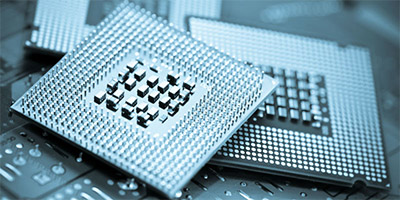Terahertz processor
 Recently, there have been appearing on the Internet numerous speculations regarding the emergence of a pseudo-THz processor. To help clear up the confusion about the issue, this article briefly explains the practical reasons for the implausibility of such a computer processor and redirects reader’s attention to rather more realistic modern applications of THz technology.
Recently, there have been appearing on the Internet numerous speculations regarding the emergence of a pseudo-THz processor. To help clear up the confusion about the issue, this article briefly explains the practical reasons for the implausibility of such a computer processor and redirects reader’s attention to rather more realistic modern applications of THz technology.
First rumors about the development of a new-generation THz processor started to circulate few years ago when DARPA introduced a solid-state THz amplifier chip clocked at 1THz. In reality, however, it was not a digital chip per se, but rather a terahertz monolithic integrated circuit that used a Gunn diode (most likely fabricated on Indium phosphide substrate), frequency doublers and triplers, amplifiers and control transistors. Clearly, standard CMOS technology is simply incapable of synthesizing transistors with THz bandwidth due to excessive stray capacitance. What is more, even if such a digital chip did exist, its power and heat dissipation requirements would be utterly unrealistic. It is for these reasons that modern computer processors progress in the direction of scalable multicore architecture as opposed to continual increase in operating frequency. Perhaps it is time we gave up the illusion of a THz processor and focused on more practical industrial applications of terahertz waves with numerous solutions that have been made readily available nowadays.
In fact, unlike the near-1THz engineering limited mainly to the field of astronomy and to in-lab experimental research due to low output power and prohibitive cost of available sources, it is the sub-terahertz technology that has been found widely applicable in everyday life. Having become the absolute leader in this very market sector, TeraSense group have developed cutting-edge cost-effective high-power wave sources for operating frequencies of 100 – 300 GHz. These devices in particular have been successfully implemented in various fields of NDT inspection, such as wooden furniture and ceramic tile industries, food quality control, automotive industry, medical diagnostics, security screening, etc..
As regards one of the most promising and significant market segments, the remote security screening, TeraSense has introduced its innovative body scanner v.2.0 – a unique 100 GHz imaging system capable of real-time visualization of body-borne concealed threats at a standoff range of 3-6 meters. This body scanner uses several advanced IMPATT-diode generators to illuminate the target and a novel THz imaging camera with special optics to sense the reflected radiation.